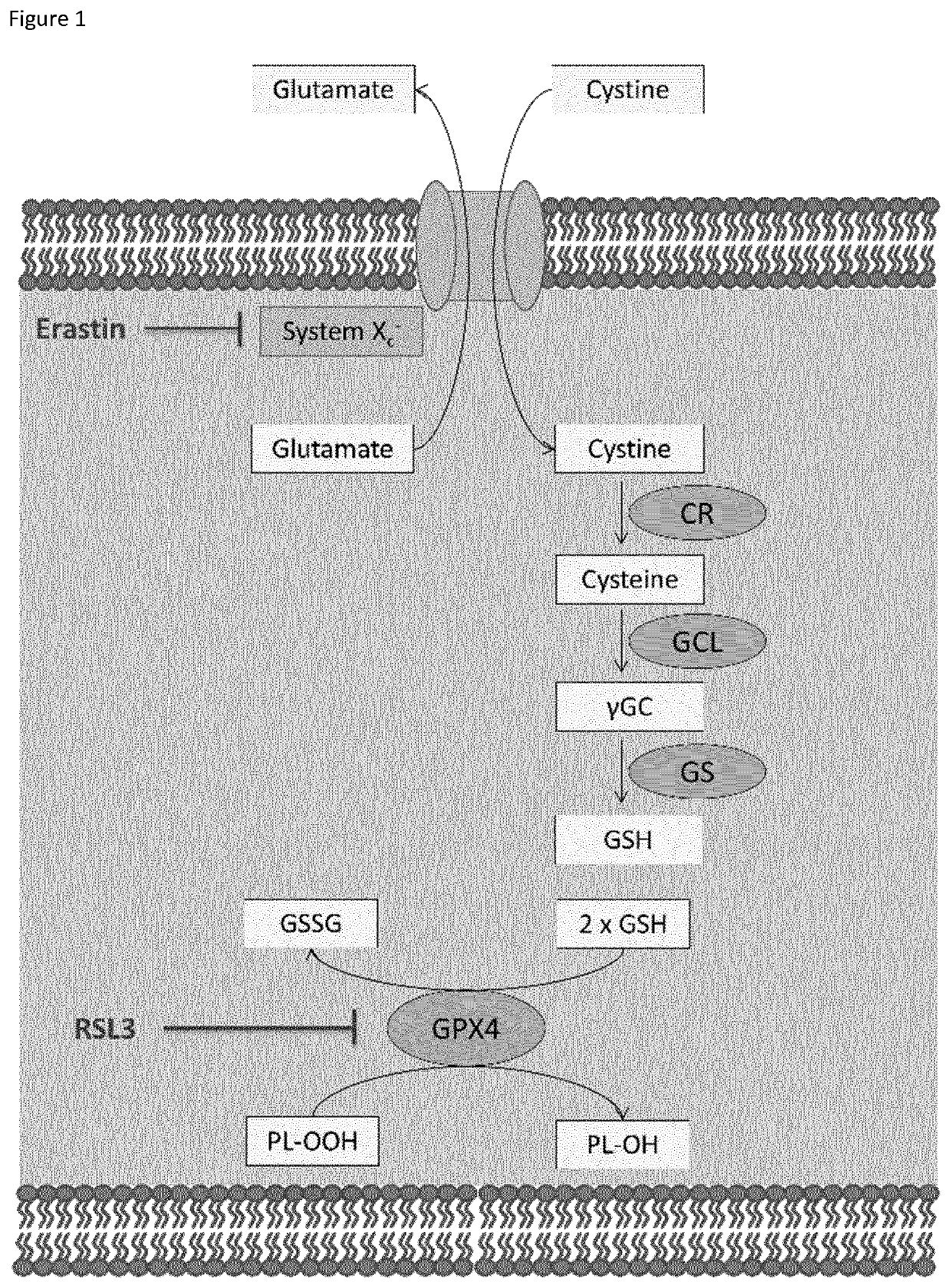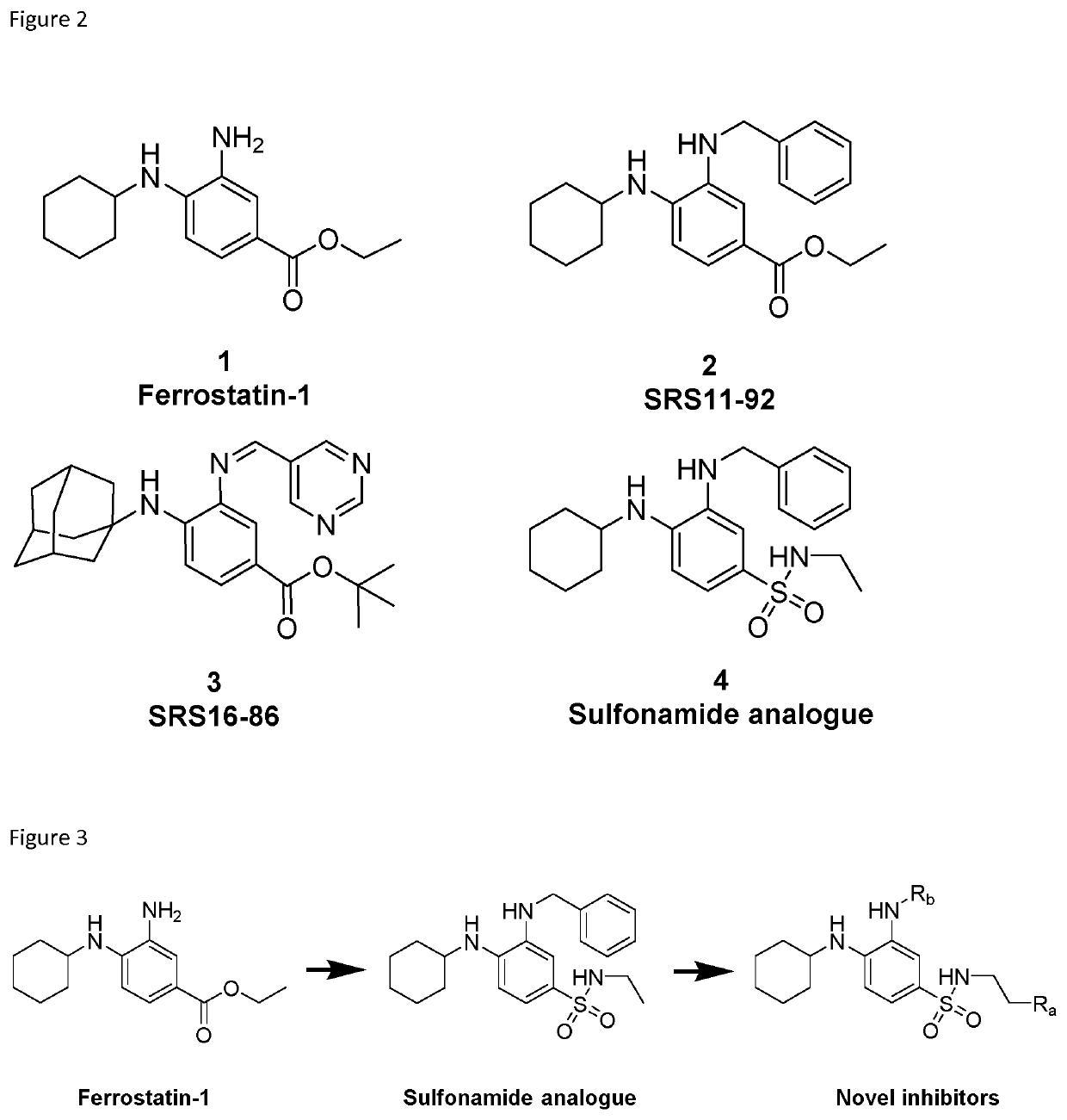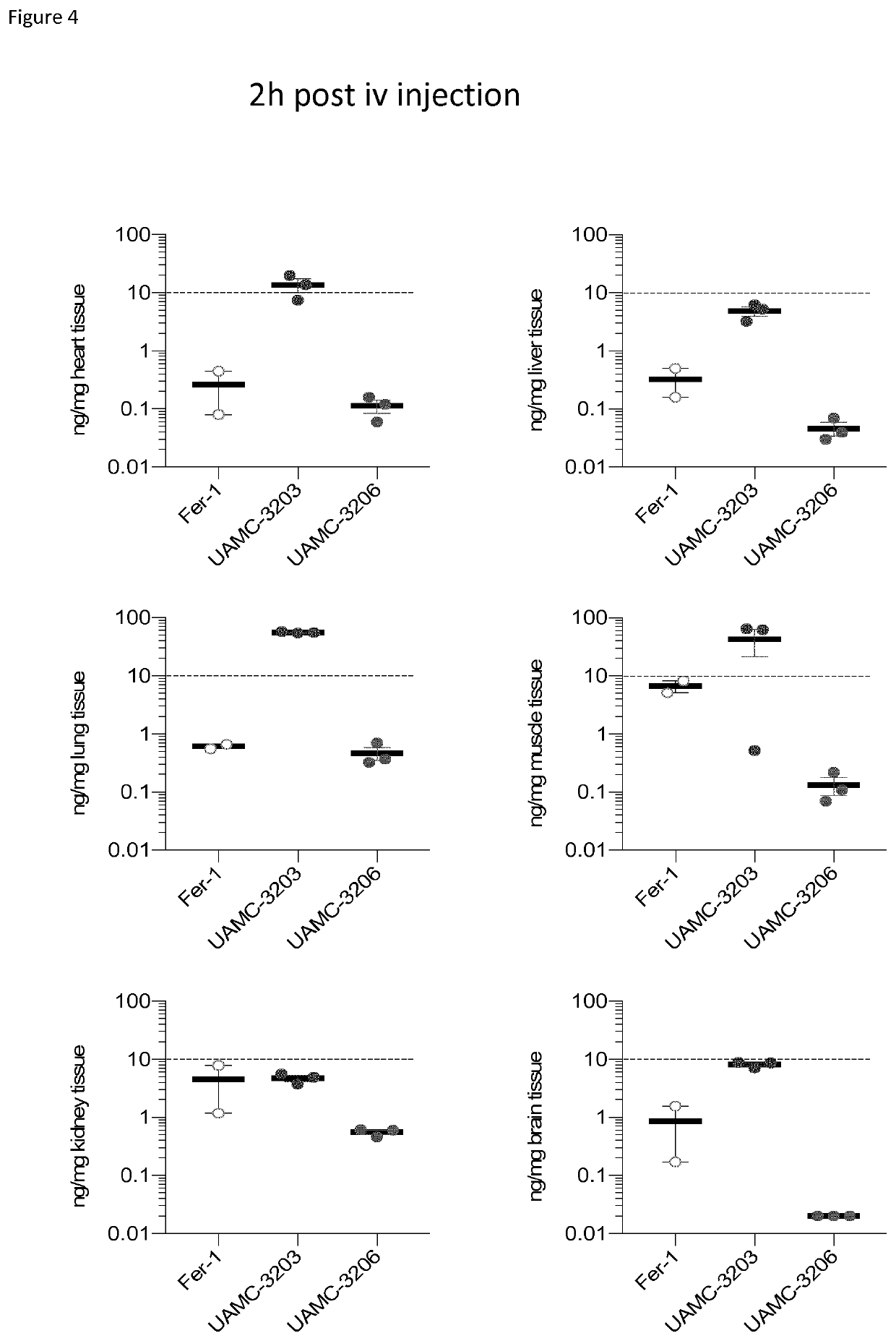3-(benzylamino)-4-(cyclohexylamino)-n-(2-(piperazin-1-yl)ethyl)benzenesulfonamide derivatives and related ferrostatin-1 analogues as cell death inhibitors for treating e.g. stroke
a technology of ferrostatin-1 and derivatives, which is applied in the field of cell death, can solve the problems of affecting the intracellular synthesis of gsh, affecting the cellular uptake of cystine, and cell death by excessive oxidation of membrane lipids
- Summary
- Abstract
- Description
- Claims
- Application Information
AI Technical Summary
Benefits of technology
Problems solved by technology
Method used
Image
Examples
examples
[0136]1. Compound Design
[0137]Our earlier published results (see WO2016075330) involved a thorough exploration of the SAR which provided the following results: (1) The replacement of the labile ester moiety with a sulfonamide greatly improved stability as well as potency (2) The cyclohexyl moiety was deemed to be the most ideal substituent in regard to both potency and lipophilicity. More bulky alkyl groups tend to have a negative effect on the solubility of the compounds and smaller moieties impair the potency of the molecules. (3) The introduction of an aromatic group on the 3-amino position greatly improved potency, but also further decreased the solubility of the compounds. 16
[0138]The major drawback of our previously published molecules was their poor solubility. The terminal position of the aliphatic chain that was coupled to the sulfonamide moiety was identified for further derivatisation in order to increase the solubility of these compounds. A variety of solubility improvi...
PUM
| Property | Measurement | Unit |
|---|---|---|
| time | aaaaa | aaaaa |
| concentration | aaaaa | aaaaa |
| internal variable dual wavelength diode array detector | aaaaa | aaaaa |
Abstract
Description
Claims
Application Information
 Login to View More
Login to View More - R&D
- Intellectual Property
- Life Sciences
- Materials
- Tech Scout
- Unparalleled Data Quality
- Higher Quality Content
- 60% Fewer Hallucinations
Browse by: Latest US Patents, China's latest patents, Technical Efficacy Thesaurus, Application Domain, Technology Topic, Popular Technical Reports.
© 2025 PatSnap. All rights reserved.Legal|Privacy policy|Modern Slavery Act Transparency Statement|Sitemap|About US| Contact US: help@patsnap.com



